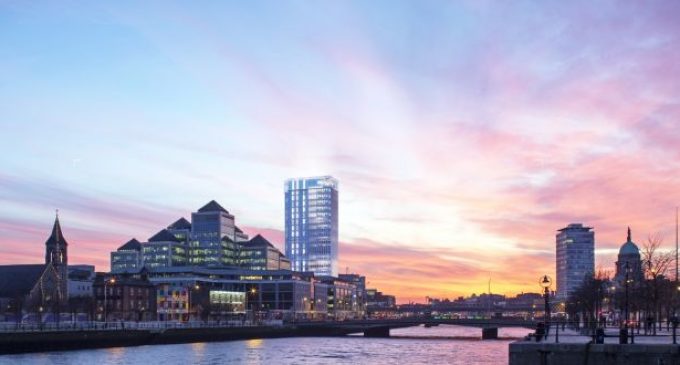Johnny Ronan’s team expresses shock as proposal to build Dublin’s tallest building is rejected

According to a statement issued to the Irish Independent by Johnny Ronan’s company, Ronan Group Real Estate (RGRE), Dublin City Council’s rejection of the developer’s proposal to build Dublin’s tallest building next to Tara Street station “demonstrates that the planning system has broken down”. Earlier this week, the Council refused the developer’s bid to construct a 22-storey (88m) tower comprising offices, a hotel and roof-top restaurant in the heart of the capital.
In the statement, RGRE’s team say they are “shocked and disappointed” by the decision to refuse permission for the scheme, given that it had been a “plan-led project” that had followed the detailed planning policies and objectives for the Tara Street scheme set down by the council itself.
The Irish Independent said that detailing the preparatory work they had carried out prior to submitting RGRE’s application to develop an 88-metre tower at Tara Street, the developers said: “Over a period of 18 months, from October 2015 to March 2017, we had approximately 13 meetings with the local authority to refine our proposals for the Tara Street Station site at Tara Street.
“We prepared over 30 different proposals for the site and reviewed the proposals from 42 different locations within the city, We complied with the adopted George’s Quay Local Area Plan (adopted by Dublin City councillors on July 2, 2012), which allows for a 22-storey high building on the Tara Street site, and hired national and international experts to review and assess the proposals, and all to no avail.”
While council planners said in their decision that Mr Ronan’s proposed tower would have a “significant and detrimental visual impact” on the city’s existing skyline, the developer’s design team countered that the City Development Plan 2016 had identified the George’s Quay area as a location for high buildings of over 50 metres.
RGRE’s design team said: “The George’s Quay Local Area Plan identifies the Tara Street site as the appropriate site for a high building of up to 22 storeys and 88 metres high. The Plan says it will serve as a distinctive landmark for the City at a key public transport node and will act as a visual counterpoint to Liberty Hall and as a termination of long distance views on a pivotal turning point in the River Liffey by the Loop Line Bridge. It is inevitable that any high building provided for on this site by the City Development Plan and George’s Quay Local Area Plan would be visible from a wide range of locations around the city.”
An assessment, carried out on RGRE’s behalf by leading international city design expert Richard Coleman prior to the group’s submission of its planning application, concluded that the Tara Street building would complement the Custom House, providing a counterpoint across the river. Mr Coleman said it would be seen as a backdrop of high-quality design to the redeveloped Hawkins House and Apollo House, and act as a landmark indicating the position of Tara Street Station and the River Liffey. He added that it would not be visible from most of Georgian Dublin and have very limited distance views from Trinity College and locations from the northside of the city centre.
RGRE says it intends to appeal the decision of Dublin City Council to An Bord Pleanala.







